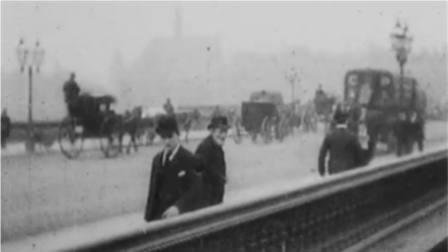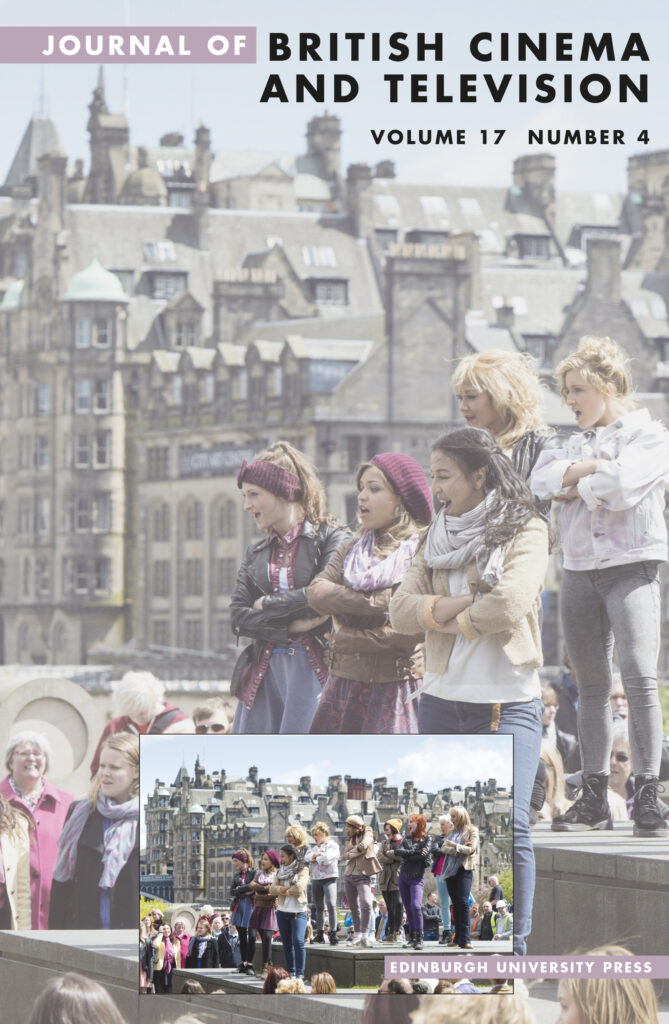
By Sean Cubitt
Note from the editors of Journal of British Cinema and Television: Given the current state of culture war, the Journal of British Cinema and Television is extremely keen to encourage further discussion of the sort of topics covered in this blog post, which relate to British cinema and television’s role in helping to construct national identity, popular memory and so on. If we can generate sufficient material, the blog posts could be included in the ‘Current Debates’ section of the journal. This is an occasional feature, and is not refereed, so material can be published fairly rapidly. Ideally, pieces should not exceed 2,000 words. Find out how to submit an article.
Julian Petley and Andrew Roberts’s stimulus piece for this blog notes a Telegraph columnist imagining a locked-down population pining for ‘an age when we were a steady, reliable, quietly heroic people’. Petley and Roberts note a number of films, ‘mainstream British pictures from the late 1940s to the 1960s’, that disturb this image of old movies as comfort blankets, but the phenomenon is far older. Take the 36 surviving seconds of a view of Blackfriars Bridge taken by Robert W. Paul in April of 1896, looking towards the Victoria Embankment at the northern end, which had been completed sixteen years earlier in 1870, covering over Joseph Bazalgette’s great London sewer, built to carry effluvia past the tidal limit and thus to solve London’s endless struggle with cholera (Allen 2001), works that in turn demanded the building of the new bridge on which Paul stood. The new Blackfriars Bridge replaced one demolished during the Embankment works in 1860 and finally completed in 1869. Standing at the tidal turning point, the bridge’s ornamental ironwork features marine life and seabirds on the eastern, downstream side and freshwater birds on the western, upstream side (Lazarus 2018). Blackfriars Bridge was built with much of the same engineering spirit as the Robert W. Paul/Birt Acres camera, using many of the same materials, and almost as modern.

Once the object of public fascination (Dobraszczyk 2005, 2008), the Embankment sewer, like the bridge, has already disappeared under the streets, just as the bridge, as a feat of engineering, is practically invisible in Paul’s film. We are no longer amazed by cinema as audiences of 1896 might have been, but we share with them a lack of wonder at the mechanics of literacy, media we fail to see as we see through them, like the writing on two of the carts that pass the camera, one at the beginning with the words ‘GLEN’ and perhaps ‘VESTRY’ painted on it, and one at the end with the bold letters C and P. Perhaps if we had been Londoners of 1896 we might have known or guessed what they referred to. Meanwhile, the young man who, unusually among those passing nearest the camera, does not look up from his newspaper, ignites recognition of the absorptive powers of handheld media a century later. Hidden beyond the north end of Blackfriars Bridge, under the Embankment, beside the sewer, Bazalgette also installed the East-West tunnel of the District Line underground railway. This invisible carrier was already not only short-circuiting the carters but replacing the direction of road transport with telegraphy and automatic mechanical systems. Paul’s film is modern because it documents both visible media transformations and the invisible hierarchies that manage them.
This may explain the disapproving glance of the well-dressed gentleman in the top hat as he approaches the camera’s position. His laborious acquisition of literacy, wealth and position is devalued and bypassed by the camera. Even if he did not know it was catching ‘living pictures’, he knew photography was more than after-dinner entertainment, especially photos seized on the fly in the open air and in public spaces. The returned gaze so assiduously avoided in subsequent cinema is a constant in the early years, a clause in the contract of portraiture which, however, was voided or at least betrayed when Paul collected his likenesses without the permission or participation of his subject. Without this contract, film joins journalism in being at once exploitative and democratising. A cat may look at a king, but the king has the right to object. In his world, the camera’s gaze is insolent and he looks indignant because his dignity has been infringed in a social order that depended on class hierarchy. When the Lumières filmed the workers leaving the factory, they were looking at their employees leaving their factory, using their privilege of looking at their workers, and perhaps enjoying seeing them trotting off for their lunch break as a paternal pleasure. Paul’s gaze, on the other hand, is politically as well as mechanically democratic, and from the standpoint of the gentleman in the topper, frank to the point of indecency and radicalism.
Contrast here the equally frank look of the man with the cap on the back of his head who asserts his right to look in exactly the way that Paul does. But then consider the older, bearded man. His look appears to be triggered by observing the City gent in the bowler who has been looking down at the river before noticing the camera, and who keeps looking at it without raising his head so that his eyes are shaded. The bearded man turns to look over his shoulder at the camera as bowler-hat passes, stooped and breathing through his mouth rather than gaping in awe, looking old or prematurely aged, and weighed down. He gives the camera a few moments of attention before turning back to the direction of his walk. The glance is fleeting, and we can wonder whether he ever recalled his glimpse of the animatograph, or just confirmed that the experimental apparatus had nothing to do with him and carried on. Unlike the gent, he had no reason to expect to be recorded. If he knew of photography, he might have imagined Paul was aiming for a Daguerrotype of the fine new buildings, not, surely, his own life at the bottom of the London pile. If he knew a little more about the still-new art, he might have guessed that long exposure would erase all fleeting movements and record only the unmoving architecture of a depopulated scene. He might, if that were so, have already imagined himself as a photographic ghost.
Two women appear in the scene. One walks on her own, hatted and dark-clothed, hand on hip, with something of a sashay, paying no attention to the camera. Perhaps she is used to being stared at. The first woman seems young, self-confident, independent, perhaps employed in the City. The other woman holds her escort’s arm and looks with him towards the photographer. Older and of a ‘better’ class, like her escort she ranks herself above the journeyman photographer, even though her position, we might infer, as any passer-by might, comes from the privileges of birth and marriage. Further from the lens, one man crosses the road, briskly avoiding the traffic. A male cyclist passes northbound, but no women seem to be braving the city on wheels despite this being the height of the cycling craze (Jungknickel 2018), just as there are no women among the cyclists leaving the Lumière plant, despite, on the one hand, film’s love affair with gender, and, on the other, its intense and complex relation with the bicycle that came into prominence at the time of cinema’s invention (Bennett 2019). Like the bicycle, cinema converts rotary motion into linear, the circuit of time into its projection onto new trajectories. Like Paul’s cinema, the bicycle was an instrument of democracy and already a transport of freedom, such as cinema would later become.
Not least freedom from the muck that must have covered the road behind all those horses. The carter walking beside his horse in the very first few frames is the only person treading through it: the cart-and-two, the carriages and omnibuses all let the horses do the walking, quite probably wearing tail bags to collect the valuable manure for freighting out to the market gardens of Essex and Kent. The preponderance of animals in the city is striking. A dozen or more horses pass, blinkered, harnessed and at work hauling clerks to the new offices north of the river and carts sufficiently laden for the walking carter to have avoided adding to the weight.
Go to Part 2 of this blog post.
References
Allen, Michelle Elizabeth (2001), Cleansing the City: Sanitary Geographies in Victorian London, Athens OH: University of Ohio Press.
Bennett, Bruce (2019), Cycling and Cinema. London: Goldsmiths Press.
Dobraszczyk, Paul (2005), ‘Sewers, wood engraving and the sublime: picturing London’s main drainage system’, Illustrated London News, 1859-62. Victorian Periodicals Review, 38: 4, pp. 349-78.
Jungnickel, Kat (2018), Bikes and Bloomers: Victorian Women Inventors and their Extraordinary Cycle Wear, London: Goldsmiths Press.
Lazarus, Deborah (2018), ‘Nineteenth-century cast-iron parapet of Blackfriars Road Bridge, London’, Proceedings of the Institution of Civil Engineers–Engineering History and Heritage,171: 4, pp. 156–67.
The Journal of British Cinema and Television is indispensable for anyone seriously interested in British cinema and television. Themed issues alternate with general issues, and each issue contains a wide range of articles that encourage debate. Sign up for Table of Contents alerts, find out how to subscribe, or recommend to your library.






